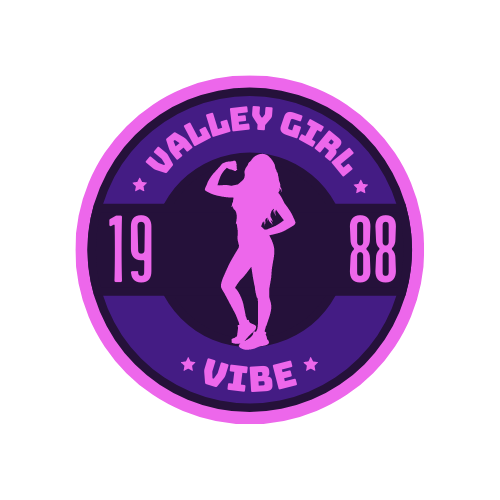Many people experience a troubling phenomenon where their sunburn appears to worsen as the sun dips below the horizon. This can be surprising, especially after a day spent outdoors. You may notice increased redness, discomfort, and even swelling, leading to questions about the timing of your skin’s reaction. Understanding the reasons behind this can help you manage your symptoms better and take the right steps for effective recovery. In this article, we’ll explore the physiological changes that occur within your skin and what you can do to alleviate your discomfort.
The Biology of Sunburn
The biology of sunburn is a complex process that involves your skin’s response to UV radiation. When you expose your skin to sunlight, it absorbs harmful UV rays, leading to cellular damage. Your body has mechanisms to repair some of this damage, but excessive sun exposure can overwhelm these processes, resulting in inflammation, pain, and peeling skin. Understanding how your body reacts to the sun can help you protect your skin more effectively.
Understanding UV Radiation
Radiation from the sun comes in two primary forms that affect your skin: UVA and UVB rays. UVA rays penetrate deeply into your skin and are responsible for premature aging, while UVB rays cause the visible redness and burning associated with sunburn. Both types of UV radiation can damage your skin cells, increasing your risk of skin cancer over time.
Skin Response to Sun Exposure
Any time you expose your skin to sunlight, your body triggers an inflammatory response as a means of protection. This response includes increased blood flow to the affected area, causing redness and warmth. Additionally, your skin may start to peel as your body works to shed damaged cells. This reaction can also result in pain and discomfort, alerting you to the fact that your skin has been harmed.
Further, it is important to note that while your body attempts to heal itself, overexposure to UV radiation can lead to long-term effects such as premature aging and a higher risk of skin cancer. Your skin’s inflammatory response, characterized by redness and peeling, is just the beginning of a potentially harmful cycle. Protecting your skin with sunscreen, seeking shade, and wearing protective clothing can significantly reduce the risks and help maintain the health of your skin in the long run.
The Role of Inflammation
Clearly, inflammation plays a significant role in the discomfort you experience from sunburn. When your skin is exposed to UV radiation, your body’s natural response involves increased blood flow to the affected area, resulting in redness, swelling, and pain. This process can make your sunburn feel much worse after the sun sets, as factors such as temperature drops and humidity changes might amplify your discomfort. For more information about the duration of your sunburn, check out How Long Does a Sunburn Last?.
How Inflammation Affects Skin
With inflammation, your skin undergoes various changes that can heighten your sensitivity. The increased blood flow not only brings immune cells to the area but also makes your skin feel warmer and more sensitive to touch. The swelling caused by inflammation can lead to a stretched feeling in the skin, which may intensify the pain and discomfort you’re experiencing.
The Timeline of Sunburn Symptoms
About 24 hours after sun exposure, you may start to notice the full effects of your sunburn. This delay can often make sunburn feel worse as the initial redness evolves into more pronounced symptoms like blistering and peeling as your skin tries to heal itself. You should anticipate that the inflammation from your sunburn will continue for several days.
Even after the initial sun exposure, your skin is still reacting. Within the first 6 to 48 hours, you may notice redness intensifying, along with painful swelling and tenderness. If severe blisters form, it’s vital to keep an eye on signs of infection. Luckily, after about 3 to 7 days, the skin starts to heal and the inflammation subsides, but persistent discomfort might linger. Your body needs to repair itself, so being gentle with your skin during this time is crucial for effective healing.
Psychological Factors
Any discomfort or pain associated with sunburn can be amplified by various psychological factors. These may include your mood, anxiety levels, and overall stress. Other aspects to consider are:
- Anticipated reaction to pain
- Previous experiences with sunburn
- Social influences and feedback from others
Thou should consider the strong link between your mental state and the perception of pain.
Perception of Pain and Discomfort
Discomfort can intensify the sensation of pain, creating a feedback loop that exacerbates your feelings. Factors like anxiety and expectations about sunburn can influence how you perceive discomfort. If you approach a sunburn with a sense of dread, your brain may heighten its response, making it feel even worse than it actually is.
The Impact of Darkness on Sensation
After the sun sets, you may find that your sunburn symptoms feel more pronounced. The fading daylight can alter your perception, making you hyperaware of any discomfort. As your environment grows darker, your other senses heighten, thus drawing your attention to sensations that you might otherwise ignore during the day.
But don’t underestimate the role of environmental changes in how you experience sunburn. The brain often associates darkness with vulnerability and fear, amplifying discomfort and pain. This heightened awareness can make the sting of a sunburn feel unbearable, leading you to worry about your skin’s condition. Understanding this relationship can empower you to manage sensations more effectively as the day transitions to night.
Environmental Influences
To understand why sunburn seems more intense after the sun sets, you must consider Sunburn related environmental factors. Elements like temperature, humidity, and even your surroundings can influence how your skin feels post-exposure. Not just the sun, but other conditions can accentuate the discomfort of a sunburn.
Temperature Changes After Sundown
After sunset, the cooling temperature can cause your skin’s sensitivity to heighten. The table below illustrates how temperature fluctuations after sundown may affect your sunburn experience:
| Daytime Excess Heat | Increases skin irritation |
| Cooling Evenings | Sharp contrast may heighten pain |
Humidity and Skin Sensitivity
With rising humidity levels, you may also feel an increase in discomfort from your sunburn. High humidity can exacerbate skin irritation, making it feel itchier or even more painful.
Sundown typically brings added moisture to the air, which can infiltrate your skin and trigger a reaction. When you have a sunburn, your skin is already damaged, and increased humidity may lead to heightened sensitivity. Your skin might feel itchy and uncomfortable, emphasizing the need to apply after-sun care. Proper hydration can also alleviate some of the discomfort you experience before and after the sun sets.
Prevention and Care
Keep your skin protected by using broad-spectrum sunscreen with at least SPF 30. Apply it generously before heading outdoors, and reapply every two hours, especially after swimming or sweating. Wearing protective clothing, wide-brimmed hats, and seeking shade during peak sunlight hours can significantly reduce your risk of sunburn and long-term skin damage.
Effective Sun Protection Strategies
The best defense against sunburn is a combination of sunscreen, clothing, and behavioral adjustments. Choose a sunscreen that blocks both UVA and UVB rays, and make sure to apply it liberally. You should also wear UPF-rated clothing, and plan outdoor activities for early morning or late afternoon to limit exposure to the sun’s most potent rays.
Treating Sunburn Symptoms
Against sunburn, the first step is to cool the skin with a damp, cold cloth or take a cool bath. Over-the-counter hydrocortisone creams can relieve inflammation, while moisturizers help to keep your skin hydrated. Drink plenty of water to stay hydrated and consider taking an anti-inflammatory medication to manage discomfort.
Prevention is always better than treatment. If you find yourself with a sunburn, take immediate action to minimize its effects. Apply cool compresses to soothe the skin, and avoid harsh products that can irritate the burn further. Stay out of the sun until your skin has healed, and always ensure you hydrate properly to assist your skin’s recovery process. Prioritizing your skin’s health now can help you avoid serious complications later on.
Personal Experiences and Accounts
Not everyone realizes the intensity of sunburn can amplify after the sun sets. Your skin may feel hot, painful, or even itchy as nighttime approaches. This phenomenon can be frustrating, especially if you expected relief after a long day in the sun. If you’re curious about why this happens, visit the Sunburn – Symptoms and causes page for more insights.
Anecdotal Evidence of Post-Sunset Sunburn
Among many who have experienced a sunburn, stories abound about the surprising discomfort they felt after the sun went down. Individuals often report that what seemed like a manageable burn during daylight hours transformed into a more intense sensation as evening set in. These personal testimonies highlight the perplexing nature of sunburns and their lingering effects.
Common Misconceptions
Any number of misconceptions surround the idea of sunburn severity after sunset. Many believe that once the sun has dipped below the horizon, the risk of sunburn diminishes significantly. This notion can lead you to underestimate the damage already inflicted on your skin.
It’s important to note that the timing of sunburn relief doesn’t align with sunset. As your skin cools down, it can often feel more painful due to the initial damage from UV rays. Your body’s inflammatory response can become more pronounced, leading to increased redness and discomfort. Additionally, exposure to artificial light and heat sources indoors may exacerbate the pain, making it feel as if your sunburn has become worse during the night. Staying hydrated and applying soothing lotions can help alleviate some of these effects.
Conclusion
With this in mind, you may notice that the discomfort of your sunburn intensifies after sunset due to the body’s inflammatory response and the absence of external factors like sunlight to distract you. As your skin cools and the evening progresses, the pain signals can become more pronounced. To manage this, ensure you hydrate, moisturize, and consider applying soothing lotions to help alleviate the discomfort. Understanding the science behind sunburn can empower you to take better care of your skin and improve your overall recovery process.
FAQ
Q: Why does sunburn feel more intense after I’ve been in the sun all day?
A: After a day of sun exposure, the skin may continue to react even after you’ve left the sun. This is because the skin can take several hours to show the full extent of its damage. UV rays can cause inflammation and skin cell damage, which may not fully manifest until later. Additionally, as the skin cools down in the evening, the contrast between the irritated skin and the cooler environment can enhance the perception of pain and discomfort, making it feel like the sunburn is worse.
Q: Does the cooling of the skin after sunset contribute to the discomfort of sunburn?
A: Yes, the cooling of the skin can amplify the feeling of discomfort. When the skin’s surface cools, it can lead to a temporary increase in blood circulation to the area as the body tries to heal and regulate temperature. This increased blood flow can exacerbate the sensation of pain and tenderness, making the sunburn feel worse in the evening hours.
Q: Are there any remedies that can help alleviate sunburn symptoms that worsen after sunset?
A: There are several remedies that can provide relief from sunburn discomfort. Applying cool compresses or taking a cool bath can help soothe the skin and bring down inflammation. Aloe vera gel or lotions containing ingredients like lidocaine can provide topical relief. It’s also important to stay hydrated and moisturize the skin to aid in the recovery process. These measures can help mitigate the heightened discomfort that often occurs after sunset.





